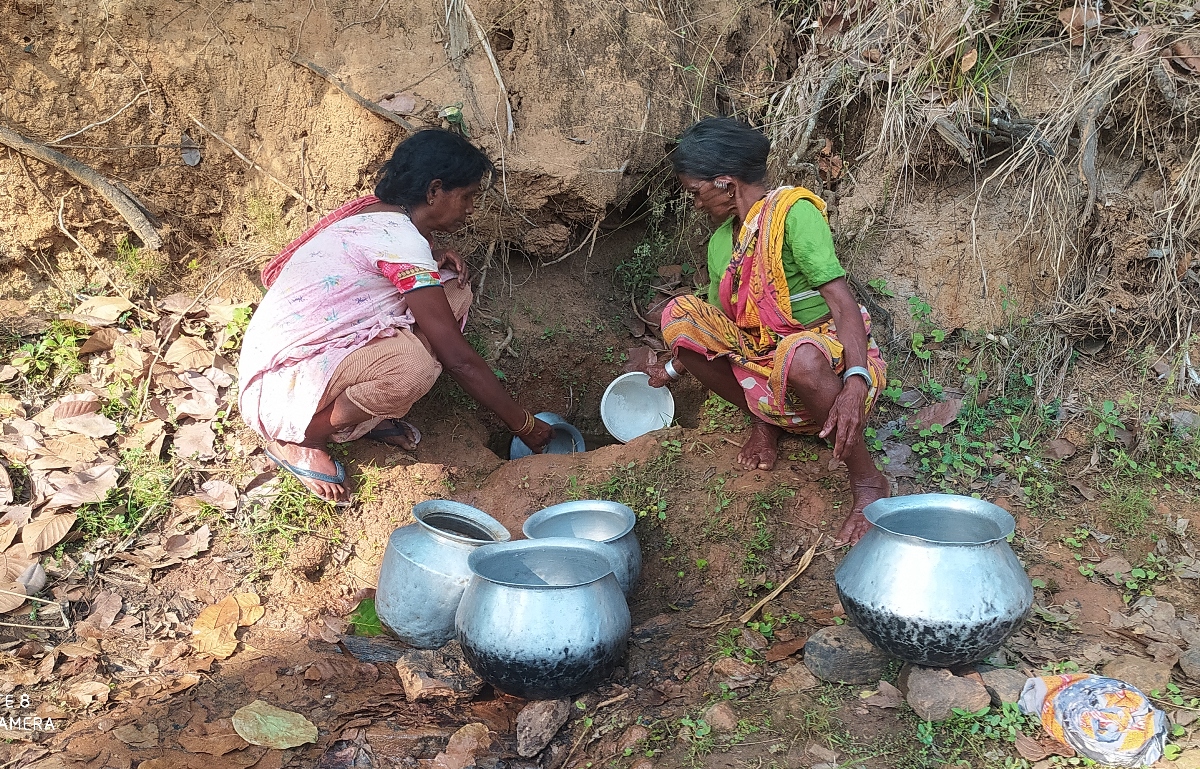Cabinet approves scheme for study of climate change, weather
Various components of the PRITHVI scheme are inter-dependent and are carried out in an integrated manner through combined efforts of the concerned Institutes under MoES.
The study by Atmashakti Trust and its allies Odisha Shramajeebee Mancha and Mahila Shramajeebee Mancha said Odisha government should initiate timely actions to ensure safe drinking water for all.

Tribal women in Kandhamal village fetching water from a Chuans
Over 40 per cent households in at least 15 districts of Odisha have no access to safe drinking water. This gives an indication of the level of water scarcity in several parts of the state, according to a study by a group of civil society groups.
The study conducted from January to mid-February this year in 9,856 villages under 866 gram panchayats of 89 blocks in Malkangiri, Koraput, Rayagada, Kandhamal, Nayagarh, Nuapada, Kalahandi, Bolangir, Sundargarh, Jharsuguda, Sambalpur, Gajapati, Boudh, Nabarangpur, and Deogarh districts revealed that out of a total of 9,37,152 households, 40.55 per cent lack access to safe drinking water. The situation is quite alarming.
The study by Atmashakti Trust and its allies Odisha Shramajeebee Mancha and Mahila Shramajeebee Mancha said Odisha government should initiate timely actions to ensure safe drinking water for all.
Advertisement
Nearly 6675 (56.12 per cent) villagers use contaminated water in their consumption. While 28.51 per cent of villagers use muddy water, 29.55 per cent find iron in their drinking water, it said.
Of the 32,960 tube wells/hand pumps surveyed, 12481 (40.93 per cent) are not working while 6,066 stand posts (48.6 per cent) of them are found defunct.
“Despite implementing Jal Jeevan Mission and Odisha government’s Basudha scheme, safe drinking water continues to elude many rural areas in the state. To avoid this alarming situation, the government should expedite the implementation of its schemes to solve water problems faced by the people,” said Mrs. Ruchi Kashyap, Executive Trustee of Atmashakti Trust.
The government should immediately initiate action through its Rural Water Supply & Sanitation (RWSS) to repair defunct tube wells/bore wells and stand posts. Also, water that produces muddy and/or iron content should be treated well before to avoid contamination. Simultaneously, the report recommended that dry pockets/water scarcity hotspots be identified to ensure water availability through tankers to people grappling with drinking water issues, the report suggested.
Advertisement